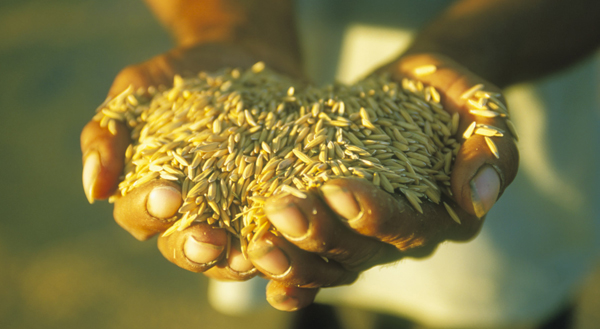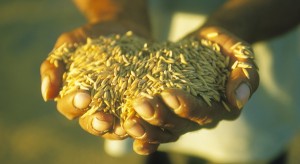- I. Agricultural Statistics
- Land utilisation statistics
- iv. Even for those areas of the country which are covered either by complete enumeration or by sample surveys, plots which are under mixed crops give rise to difficulties in deciding the cropping pattern. In some States, the total cropped area is apportioned among the constituent crops, at the field level, by the village officials through eye estimation. In some others, the entire area is recorded at the field level while the apportioning among constituent crops is done at the district level by means of fixed ratios that are supposed to represent average crop conditions. Recently, attempts are being made to have a uniform, satisfactory method for all the States.
- v. Area sown with a crop is taken to mean the area actually sown, no matter whether the crop reaches its maturity or not, except in cases where the land is devoted, following the failure of the first crop, to a new crop. In the latter cases, the area is shown under the new crop.
- vi. Each State publishes its own land use statistics. But the DES compiles the all-India figures and publishes them in the two-volume Indian Agricultural Statistics (annual). Vol. I and Vol. II which give the State-wise and district-wise data, respectively. All-India summary tables are given in both the volumes. Vo. II, in addition, gives an introductory note concerning the salient features of the rainfall, land use, irrigation and cropping pattern of the year.
- vii. It should be mentioned that statistics of area irrigated area collected as part of land use statistics. This area is classified both according to source of irrigation (canals-Government and private-tanks, wells and other sources) and according to crop irrigated. In case two crops are irrigated from the same source on the same source on the same island in the same year, the irrigated area classified by source represents the net irrigated area, while the area irrigated classified by crop represents the gross irrigated area.
- viii. The break-up of total cropped area according to different crops as shown in this publication is quite detailed. Separate figures are published in respect of the following groups and sub-groups:
- Food crops
- Food grains (cereals and pulses)
- Sugarcane
- Condiments and spices
- Fruits and vegetables, and
- Other food crops
- Non-food crops
- Oilseeds
- Fibres
- Dyes and tanning material
- Drugs, narcotics and plantation crops
- Fodder crops
- Green manure crops
- Guar and oats, and
- Other non-food crops
- Food crops
- ix. There is considerable time lag between the collection of data and their publication in the Indian Agricultural Statistics (about 3 years for Vol. I and about 6 years for Vol. II). Currently, however, the DES is issuing in mimeographed form State-wise provisional land use statistics with a time lag of about a year only.
- Crop production statistics
- i. For the estimation of yield, the various crops are divided into two groups;
- Forecast crops and
- Non-forecast and plantation crops
- ii. Forecast crops, numbering 38 and including food grains, oilseeds, fibres and crops like potato, sugar cane, tobacco, etc., are those for which all-India estimates of area and production are issued. The periodical estimated of area and production are initially prepared by the concerned State agencies but are compiled by the DES and issued on pre-assigned dates. For each of these crops, usually two to three estimates are issued; but for cotton there are five estimates and for castor seed only one. The first forecast is based on general impression and usually one month after the sowing of the crop. The second comes about two months later and includes the area of late sowings and is based on the general condition of the crop. The final forecast, however, attempts to provide firm estimates of the total area sown and the total production. These are revised about a year later and again about the total production. These are revised about a year later and again about two years later in the light of returns received from defaulting States.
- iii. The procedure formerly used for the estimation of the yield of a crop was based on the formula
- i. For the estimation of yield, the various crops are divided into two groups;
- Land utilisation statistics
Total yield=area (in hectares) X (normal yield x condition factor)
Yield per hectare
- iv. Thus the traditional method of estimating the yield per hectare, called the annawari method* is based in the notions of the ‘normal yield’ and the ‘condition factor’. The ‘normal yield’ refers to a district and is defined as the average yield on average soil in an average year. The ‘condition factor’ refers to a village and is taken to reflect to what extent the village yield per hectare during the given year is likely to differ from the normal yield. The factor is expressed as so many annas per rupee, the rupee representing the normal yield. Because of the vagueness of the concept of ‘normal yield’ and also because the ‘condition factor’ is based in eye-appraisal by patwaris or chowkidars, the traditional method is now being abandoned.
*An anna was a coin valued at one-sixteenth of a rupee.
Click here for government certification in Statistics and Quality





14 Comments. Leave new
Good work!
good effort
appreciable work
Highly Impressive work piece.
Quite Original
Thats quite good article.. Well researched and well explained article! Impressive!!
Well researched.
Well put 🙂
liked it 🙂
Nice
A great information at one place..
great article
nice
nice